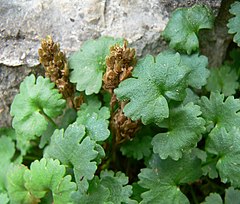Synthyris
| Synthyris subsp. var. | Kittentails | |||||||||||||||||||||||||||||||||||||||||||||||||||||||
|---|---|---|---|---|---|---|---|---|---|---|---|---|---|---|---|---|---|---|---|---|---|---|---|---|---|---|---|---|---|---|---|---|---|---|---|---|---|---|---|---|---|---|---|---|---|---|---|---|---|---|---|---|---|---|---|---|

|
|
| ||||||||||||||||||||||||||||||||||||||||||||||||||||||
| ||||||||||||||||||||||||||||||||||||||||||||||||||||||||
Describe plant here...
| Standard Cyclopedia of Horticulture |
|---|
|
Synthyris (Greek, together and little door or valve, the valves of the capsule long adhering below to the short placentiferous axis). Scrophulariaceae. Hardy herbaceous perennials, glabrous or pilose: rhizome thick: lvs. radical, petioled, ovate or oblong, crenate or incisely pinnatisect: peduncles scape-like, simple: fls. racemose or spicate, blue or reddish; calyx 4-parted, segms. narrow; corolla-tube very short or almost none, subrotate-campanulate, 4-lobed or none; stamens 2: caps. compressed, obtuse or emarginate, 2-grooved.— About 15 species, natives of W. N. Amer. Synthyris is nearly related to Wulfenia of S. E. Eu. and the Himalayas, but the anther-cells are not confluent and the seeds are discoidal. In their native region they are summer-blooming plants with small purplish or flesh-colored spikes or racemes. Border plants. CH
|
Cultivation
Propagation
Pests and diseases
Species
Gallery
References
External links
- w:Synthyris. Some of the material on this page may be from Wikipedia, under the Creative Commons license.
- Synthyris QR Code (Size 50, 100, 200, 500)
